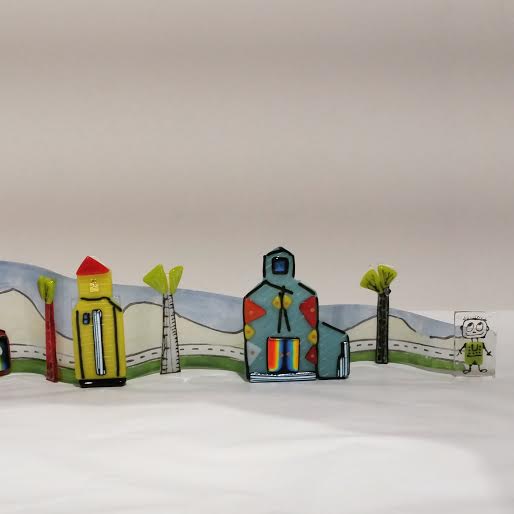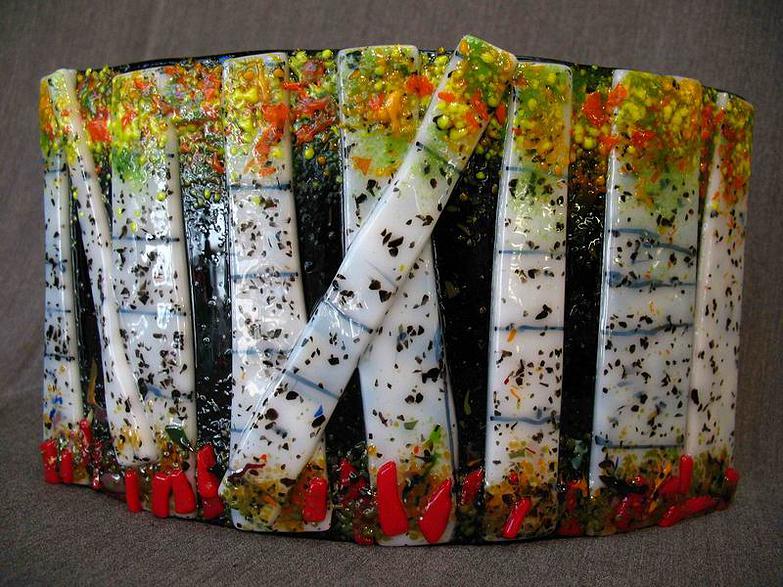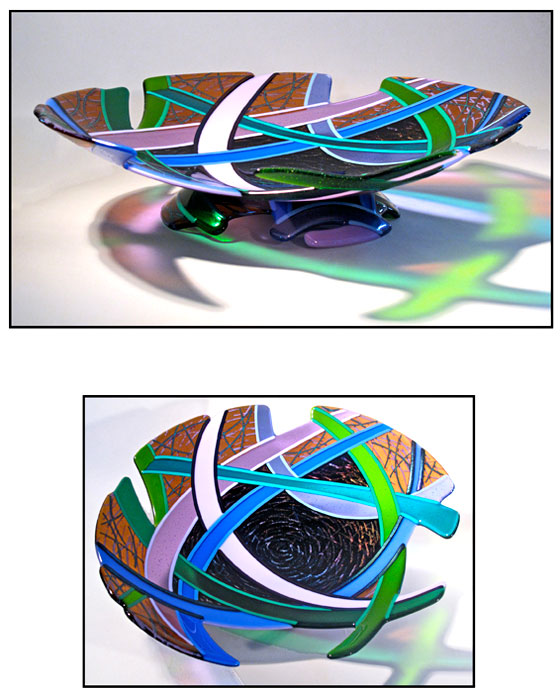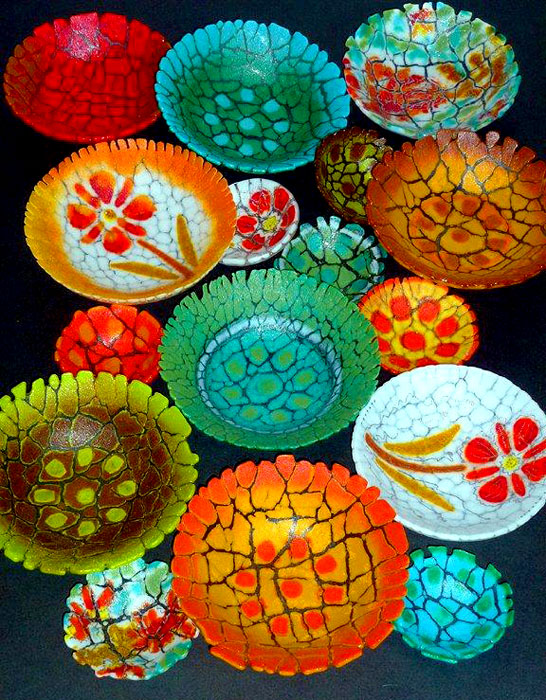Submitted by: Maia Stark, SCC Gallery Assistant
This look at fused glass examines work by Lee Brady, Kimberly Dickinson, Sue Hunchuk, Robert and Elisabeth Miller, and Al and Joan Hiebert.
Fused glass is, in its most accurate and condensed definition, glass that has been fired in a kiln at a range of high temperatures so that it melts or sticks together. Although a ceramic kiln can be used to fuse glass, most glass-workers will specifically use a kiln built for glass. Unlike stained glass, fused glass will not have “lead lines,” where layers of glass are held together by strips of lead (fused glass.org), as one would recognize in stained glass. As well, fused glass techniques can allow for the creation of dimensional pieces without having to cut apart and then re-assemble hundreds of small pieces together (fused glass.org).
The differences between specific techniques are in the temperature ranges employed, the placement of heating elements (Fusedglass.org) or the use of molds. There are three main techniques to Fused Glass: Fusing; Slumping; and Casting.
Fused: At high temperatures, glass will melt slightly and “stick” to other pieces of glass. This makes it possible for glass-workers to layer sheets of colour to create different patterns and images (Wiki).This is the basic technique of fused glass, and additional techniques make use of molds or temperatures to alter the look or achieve a certain effect.
Slumped: Slumping is a technique where a mold is used to shape the pieces of glass into a bowl or shallow plate (Fusedglass.org). For example, Saskatchewan craft council members Lee Brady and Sue Hunchuk both work in fused glass and use “slumping” techniques to create shallow bowls and forms.
Cast: With casting technique, the glass is melted into a nearly liquid state so that it flows into a mold. Fused cast glass can have many different looks, depending on technique and processThere are many variations of glass casting, including “lost wax,” “frit casting,” “hot casting,” and “pate de verre” (Fused glass.org )
Once a visitor to the gallery can recognize these fused glass techniques, they will notice that the SCC Boutique hosts many, many artists who work in this medium. Check out our fused glass pieces such as coasters, dishes, shallow bowls and decorative sculptures from artists Kimberly Dickinson, Sue Hunchuk, Robert and Elisabeth Miller and Al and Joan Hiebert in the SCC Boutique! For more information about fused glass techniques and terms, check out the resources at Fused glass.org.




